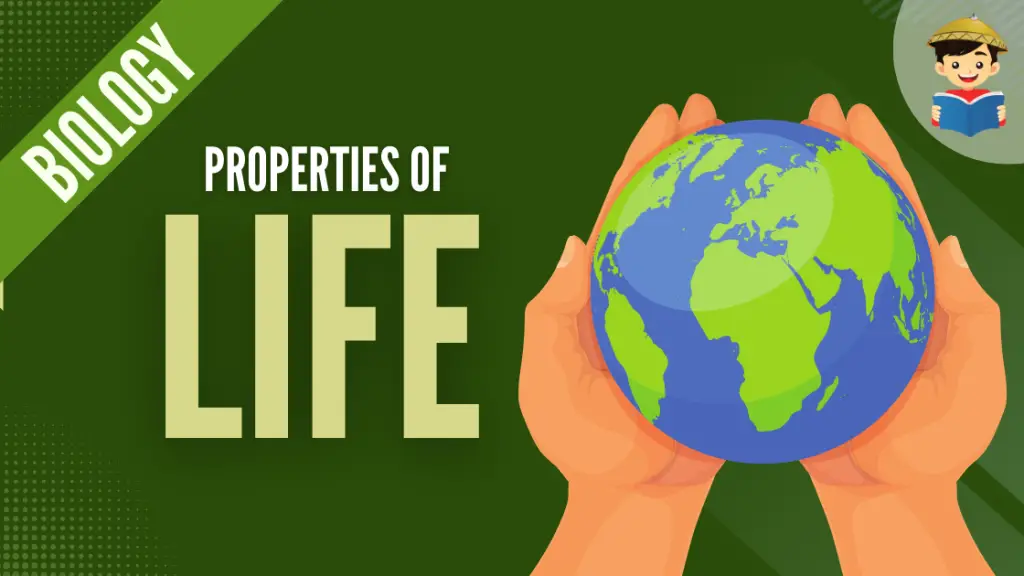Properties of Life

Life is an extremely complex concept, and yet, a small child realizes that an ant or a plant is alive while a rock and a car are not.
Throughout the history of man, many explanations ranging from the philosophical to the supernatural have been proposed to describe the meaning and purpose of life. What features are then considered to qualify if an object is alive?
In the context of biology, there are some features that have been commonly agreed upon in the field in order to describe life. This article will discuss them one by one.
Click below to go to the main reviewers:
Table of Contents
- 1. Order or Organization
- 2. Reproduction
- 3. Growth and Development
- 4. Response to Stimulus from the Environment or Irritability
- 5. Energy Processing or Metabolism
- 6. Regulation or Homeostasis
- 7. Evolutionary Adaptation
- References
- Download Article in PDF Format
- Test Yourself!
1. Order or Organization

Life is characterized by highly ordered structures.
All organisms are composed of cells – the structural and functional unit of life. Even very simple, single-celled organisms are remarkably complex: inside each cell, atoms make up molecules, which in turn make up cell organelles and other components.
In multicellular organisms, similar cells make up tissues, and in turn, tissues collaborate to create organs (body structures with distinct functions). Together, these organs work, forming organ systems.
2. Reproduction

Organisms reproduce their kind. Cellular mechanisms are in place in order for any two different organisms to not be able to reproduce at random.
Single-celled organisms reproduce first by replicating their DNA. These then divide equally as cells prepare to divide to form two new cells.
Multicellular organisms produce through specialized reproductive germ cells that form new individuals. When reproducing, genes containing DNA are passed along to the offspring. These genes ensure that the offspring belongs to the same species and will have similar characteristics.
3. Growth and Development

Inherited information in the form of DNA controls how organisms grow and develop as they mature. All organisms follow specific instructions coded by their genes. The genes provide instructions that direct cellular growth and development, ensuring that the young will grow up to exhibit the same characteristics as their parents.
4. Response to Stimulus from the Environment or Irritability

All living beings respond to their environment. For example, plants grow toward a light source, climb fences and walls, and even respond to touch. Tiny bacteria can move toward or away from chemicals (chemotaxis) or light (phototaxis). The movement toward a stimulus is considered a positive response while moving away from it is a negative response.
5. Energy Processing or Metabolism

Organisms take in energy to drive all their activities. It is the sum of the chemical activity of all body functions. Some organisms capture energy directly from the sun and convert it into chemical energy; others use chemical energy in molecules they take in as food.
6. Regulation or Homeostasis

Organisms have different mechanisms in order to maintain a beneficial internal environment.
Even the smallest organisms are complex and require multiple regulatory mechanisms to coordinate internal functions, respond to stimuli, and cope with environmental stresses. Two internal functions regulated in an organism are nutrient transport and blood flow.
Organs (groups of tissues working together) perform specific functions, such as carrying oxygen throughout the body, removing wastes, delivering nutrients to every cell, and cooling the body. In order to function properly, cells need to have appropriate conditions such as proper temperature, pH, and appropriate concentration of diverse chemicals. These conditions may, however, change from one moment to the next.
Organisms are able to maintain internal conditions within a narrow range almost constantly, despite environmental changes, through homeostasis (literally, “steady-state”), the ability of an organism to maintain constant internal conditions.
7. Evolutionary Adaptation

Adaptations of organisms to their environment evolve as traits that help individuals survive are passed over time.
As a population of organisms interacts with the environment, individuals with traits that contribute to reproduction and survival in that particular environment will leave more offspring. Over time those advantageous traits (called adaptations) will become more common in the population. This process, which changes over time, is called evolution, and it is one of the processes that explain the diverse species seen in biology.
Adaptations help organisms survive in their ecological niches, and adaptive traits may be structural, behavioral, or physiological; as such, adaptations frequently involve other properties of organisms such as homeostasis, reproduction, and growth and development.
References
Campbell, N. A., Cain, M. L., Minorsky, P. V., Reece, J. B., Urry, L. A., & Wasserman, S. A. (2018). Biology: A global approach. Harlow, Essex, England: Pearson Education Limited.
Kimball, J. W. (1994). Biology. Dubuque, Iowa: Wm. C. Brown Publishers.
Taylor, M. R., Simon, E. J., Dickey, J., Hogan, K. A., & Reece, J. B. (2018). Campbell biology: Concepts & connections. New York, NY: Pearson Education, Inc.
Urry, L. A., Cain, M. L., Wasserman, S. A., Minorsky, P. V., & Reece, J. B. (2017). Campbell biology. New York: Pearson.
Next topic: Biomolecules
Return to the main article: The Ultimate Biology Reviewer
Download Article in PDF Format
Test Yourself!
1. Practice Questions [PDF Download]
2. Answer Key [PDF Download]
Earl Jeroh Bacabac
Earl’s love for the sea fueled his goal to become a marine biologist. He obtained his Bachelor’s Degree in Biology from the University of the Philippines Visayas while also being a DOST scholar. His passion for the marine environment is rivaled by his diverse interests in music, the arts, and video games.
Copyright Notice
All materials contained on this site are protected by the Republic of the Philippines copyright law and may not be reproduced, distributed, transmitted, displayed, published, or broadcast without the prior written permission of filipiknow.net or in the case of third party materials, the owner of that content. You may not alter or remove any trademark, copyright, or other notice from copies of the content. Be warned that we have already reported and helped terminate several websites and YouTube channels for blatantly stealing our content. If you wish to use filipiknow.net content for commercial purposes, such as for content syndication, etc., please contact us at legal(at)filipiknow(dot)net